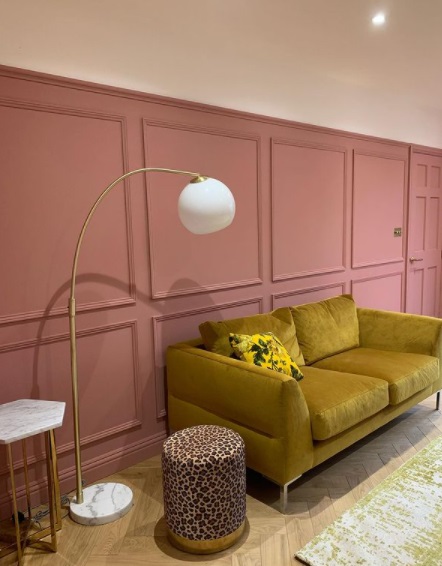
If you haven't already, check our full guide on how to paint skirting boards (we've also covered the best paint to use here). With that being said, you're here to learn how to paint skirting boards without getting paint on the walls (and carpet, for that matter). So let's get started.

Cutting In
The best technique is without a doubt cutting in. It offers a professional finish but can be a tricky one to master.
For instance, if you're painting your skirting boards a different colour to the wall you'll to 'cut in' to get a flawless finish. You can also use the cutting in technique to achieve straight lines where needed.
How To Cut In Professionally
If you're confident and want to give this technique a shot, we've written a step by step guide to help you master it.
- Before you start, make sure you have a 3 inch (8cm) angled brush. When holding the paintbrush, you'll want to hold it as if you're holding a pencil. Grip the handle of the brush close to the bristles. You also need to keep the brush horizontal so that the long edge of the brush is parallel to the wall.
- When dipping the brush into the paint, it's best to dip straight down and only far enough to cover the first third of the bristles (remember to tap off any excess paint). Pro tip: If you've got a spare rubber band to hand, stretch it over the top of your paint tin. This can then be used to wipe your brush against it to quickly remove any excess paint!
- Because we're talking about painting skirting boards, we'll cover cutting in along a horizontal line first. So this will most likely be painting the top edge of the skirting where it meets the wall. We recommend that you start painting approx. 2 inches (5cm) away from the corners. When you start painting, it is best to use a single stroke. This helps to push the paint from the brush onto the surface and creates a smooth surface upon which the brush can glide.
- If you happen to have a decorative architrave around your windows, you'll need to cut in along a vertical line too. If this is the case, use step 3 as a guide but paint along the vertical line.
- To eliminate brush marks, work down the wall (from wet to dry) and gently sweep back over the painted areas.
- Still having a tough time? Use masking tape along the edge of the wall where you're currently painting. If you do use masking tape, remember to use the 'low-tack' type (readily available from DIY stores) and remove it before the paint has had time to dry. This will help to make sure the wet paint doesn't seep underneath the tape and prevent non-masked paint from being pulled away when the tape is removed.
So there you have it - a guide to cutting in. Remember, it will almost certainly take a few attempts before you master the art. With this in mind, you could always practice on a test area before attempting it for real!
Also, when cutting in it is best to paint in short bursts and adding just a little paint to the brush each time. This helps to paint straight lines more easily and keep the finish looking professional. Don't squeeze the brush against the surface as this can lead to paint drips - use a light touch and keep a steady hand!
Using Masking Tape
As discussed above, masking tape can be a great help if you don't want to get paint on the walls (especially if you've already painted them!).
The trick is to use a 'low-tack' masking tape. This will help to prevent paint being pulled off the surface where the tape has adhered.
You need to apply the masking tape where the brush may touch the wall (where you don't want the paint to be applied). So if you're painting the top edge of the skirting board, you'll apply masking tape to the wall where it joins the skirting.
Using A Paint Shield
Another useful tool is a paint shield. It works in much the same way as masking tape, putting a block between the paintbrush and the surface where you don't want the paint to end up.
Normally, these are used against the carpet and the skirting board but can work well alongside masking tape in other areas.







